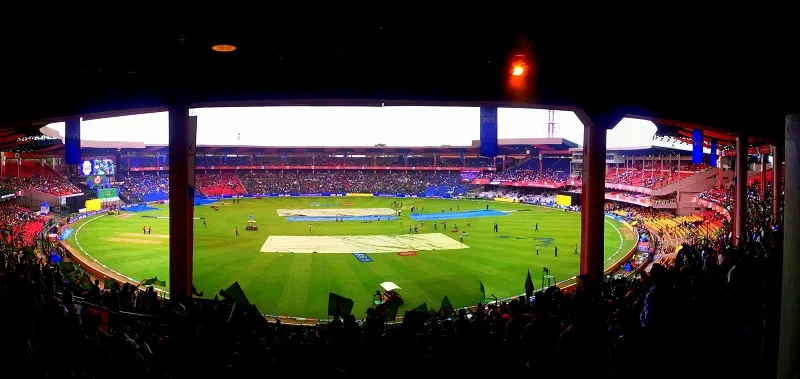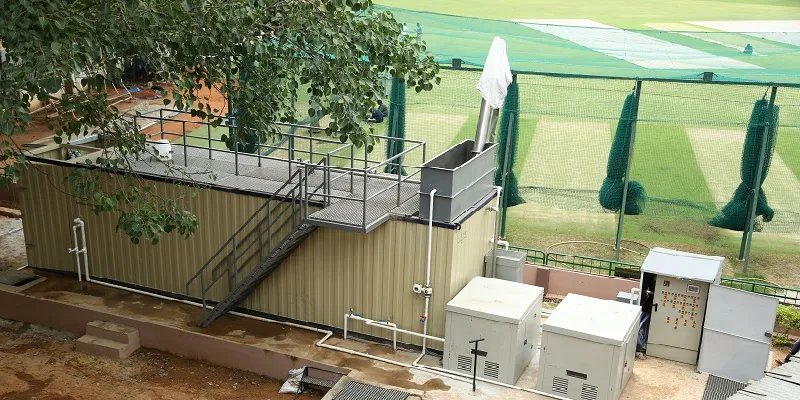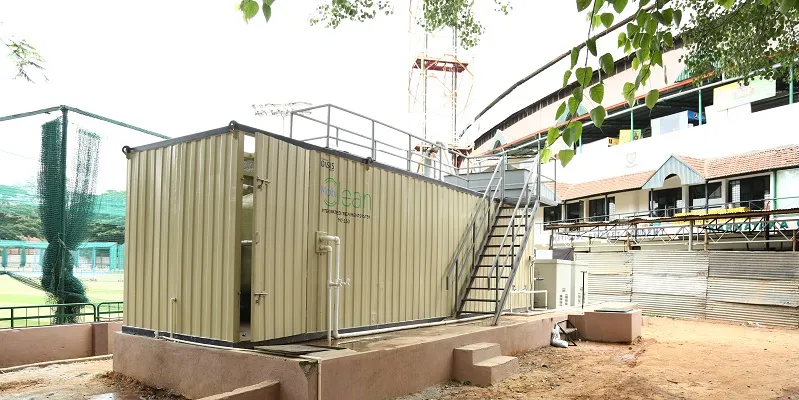How Bengaluru’s Chinnaswamy Stadium earned the badge of the country’s first ‘green’ stadium
The Indian economy and its growing efforts to tackle global warming have experienced a strong upswing lately. In recent times, thousands of farmers and villagers have been battling for their survival with temperatures soaring to record highs. In addition to severe drought in the villages from the Marathwada region in Maharashtra to the rural parts of Bihar, and the raising concerns of environment depletion, the significant loss of life has also been a cause of alarm.
The country is currently witnessing the worst drought in decades, so much so that about 256 districts and 330 million people are under the scanner as the worst affected. Karnataka, at large, is one of the worst-hit states. This year, 136 out of 176 taluks in the state have been declared drought hit. Though the government and other bodies have been instrumental in bringing some initiatives and plans to fight the issue, the dent they are trying to fill is still mind-bogglingly big.

Though the state is discovering ways to fly under the radar of drought, a few civic bodies have stood tall to do their bit in utilising the resources efficiently. With Bangalore topping the chart as a city that caters to the highest number of cricket enthusiasts, Chinnaswamy Stadium experiences the highest footfall any Indian stadium does. Today, the stadium stands tall, gleaming in the glory of being the first-ever cricket stadium in the country to have an in-house solar rooftop, an effective rainwater harvesting system and a one-of-a-kind sewage treatment plant.
It all started in 2015, when Brijesh Patel, the KSCA (Karnataka State Cricket Academy) Secretary, and former test match cricketer, headed a partnership with a German firm. Under Patel’s leadership, the stadium pioneered the introduction of modern technology. Soon, the authorities were confident about the plan and the system was laid out. At the stadium, on the circular rooftop, the surface area is covered with photovoltaic cells to generate solar power for its use. The solar panels are placed in such a way that it can generate 400 kilovolts (1,700 units per day) or six lakh units per annum.

The plant is designed to generate 5.90 lakh units per year, the equivalent of powering 200 AEH (All Electric Homes) households using three KW power annually, and also saving about 600 tons of carbon dioxide emissions annually, Patel said in an interview to NDTV.
Each of these plates are 2 m x 1 m and occupy approximately 10,000 sq. m. It took about 45 days for the project right from installation to fabrication to the final test run, and was inaugurated by Minister of Energy, Karnataka, D. K. Shivakumar.
"Our stadium is the first in the country to install solar panels on the rooftop above the eastern stands to generate about 1,700 units of power daily to meet a part of our energy requirements," said Syam, an engineer from the KSCA.

When asked how stadium authorities monitor the system, Syam says,
“The entire system is automated using a technology called SCADA system, and at the end of the day, we can access the performance and power generated by these solar panels. Not just this, the entire system is powered by the BESCOM (Bangalore Electricity Supply Company) Grid under the Net Metering policy, under which KSCA would pay for only the net of power generated and power consumed. In case of excess solar power, if given to BESCOM, then the utility will pay KSCA Rs. 9.56 per unit.”

The KSCA self-funded this project at a cost of Rs 3.8 crores. There are approximately 1,422 panels covering the eastern side of the stadium, and the authorities are very positive about turning the entire rooftop with solar panels, very soon.
Well, this is not the end. Chinnaswamy Stadium has recently installed a sewage treatment plant with the help of the local body BWSSB (Bangalore Water Supply and Sewage Board). The entire system outsources the sewage water flowing along the lines of Queens Road and uses the same after the treatment to water the turf, for gardening and landscaping mostly. This project rounded of the overall budget to about Rs 1 crore, which was self-funded by KSCA alone.

When asked about how the entire process works at the Sewage treatment plant, Srikanth, Executive engineer at KSCA, walks the team of Yourstory into the different steps and filtration processes. He says,
The sewage water from the sewer manhole is laid through trenchless system through a nine- inch diameter pipe to a collection tank in the stadium. Once the water, is collected it goes through a three-stage filtration process.
Stage 1- Physical process
The system predominantly removes huge chunks of garbage collected in the sewage water. The water is collected in a collection tank with a buffer capacity of 16 hours, which is then transferred through a pump for further treatment.
Stage 2-Biological process (MBBR system)
The moving-bed, bio-reactor system is a specially engineered PU carrier media that is kept in a fully mixed condition together with the sewage. After a series of aerobic processes, where microorganisms are supplied with oxygen, the excess sludge is removed and the rest is passed on to the next stage.
Stage 3- Tertiary process (Sedimentation)
Though the above two cycles predominately treat the water, the sedimentation process adds huge value to the system. When the water from Stage 2 is left for sedimentation, a huge mass of sludge settles down leaving behind a comparatively decent quality of water.

If you thought that, efficient solar rooftop and sewage treatment plant was the only two initiatives Patel has led, wait till you hear about the rain water harvesting system. The area outside the main turf are built around 20 different water tanks that are at the ground level. As and when the stadium experiences rain, this water is collected and sent back to the ground through smaller inlets. This helps in retaining the surface moisture.
Also read : If you think IPL doesn’t care about the Maharashtra drought, reading this will change your perspective
Calling for a mass movement of water conservation and the efficient utilisation of natural resources, the Bombay High Court had asked the Board of Control for Cricket in India (BCCI) to use sewage water for ground maintenance for the Indian Premier League (IPL) across the drought hit areas. Though this order came in at the right time to fill in few dents, the gap is too huge to be monitored. But with organisations like the KSCA putting their heart into converting places like the Chinnaswamy Stadium into a green spot, it is definitely leaving behind a legacy for others to follow and to implement at a larger scale.







